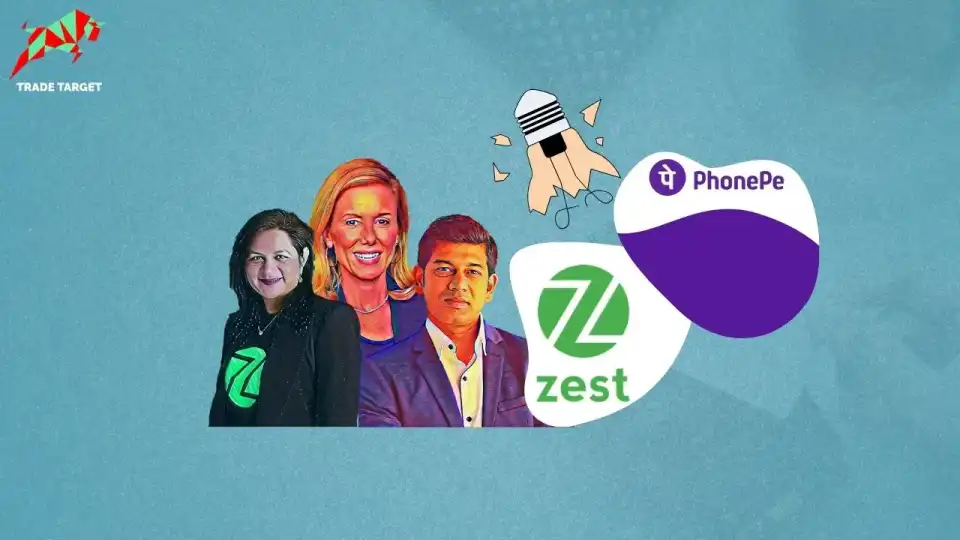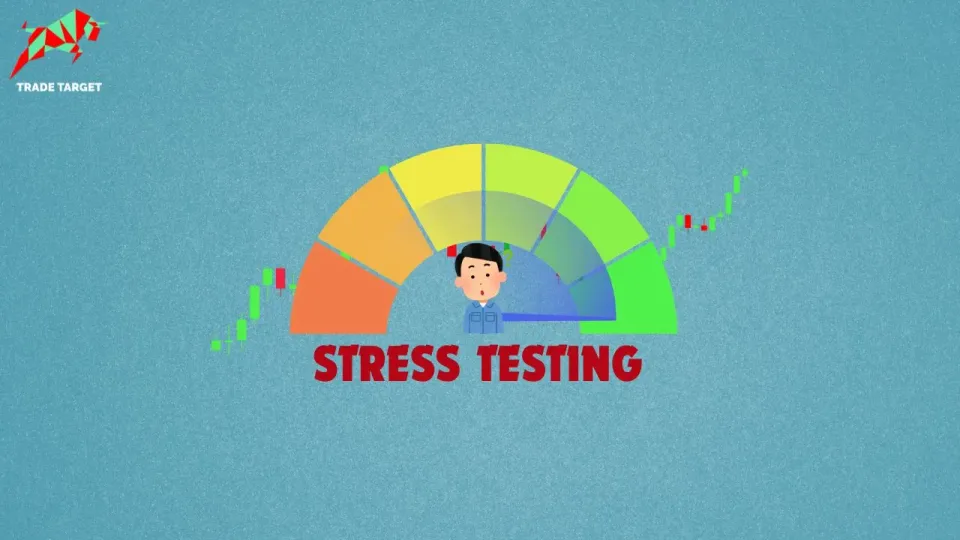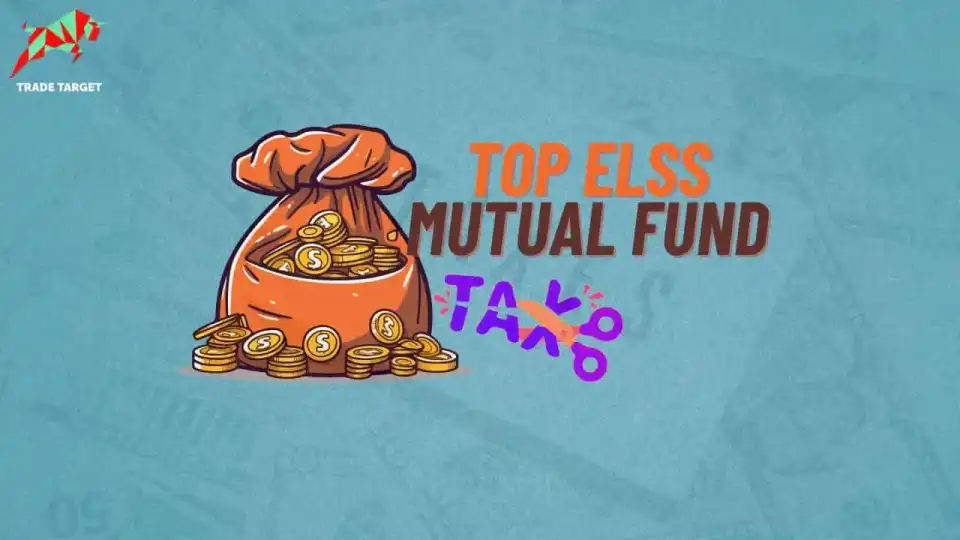Subscribe for real-time financial insights on Trade Target’s WhatsApp Channels
Hey…! Have you heard the ZestMoney slogan “Adjust Nahi, Zest Karo“? If this catchphrase sounds familiar and has been echoing around you, then you probably know that your next purchase is just a click away, with no upfront payments, easy installments, and no extra interest.
The recent turn of events paints a different picture, where employees are being told that
“Zest Me Kaam Karte Ho To Adjust To Karna Hi Padega”
Why, you ask?
Well, some employees were caught spicing up their LinkedIn profiles with the “Open to Work” tag, turning the office drama into a full-blown sitcom.
In fact, the firm has promised their employees two months of severance payment and outplacement support, but some employees spilled the tea on LinkedIn by saying, “We had a feeling something wasn’t right, but shutting down? Totally didn’t see that coming. They promised us a paycheck for next month, but now it’s all tense.” Many have started reaching out for jobs outside, all because of the hush-hush gossip about their struggles and whatnot. Things like running low on cash suddenly started making sense.
The news of the company’s impending shutdown shocked the staff, who were informed that the company could only sustain salary payments until December 31.
“Now what???”
Let’s get into the story that has sent shockwaves across the nation, leaving everyone eager to uncover the root cause behind this shocking news.
Let’s first understand the backstory and the core mission of ZestMoney. Have you ever wondered about the 300 million households in India hungry for financial wings?
ZestMoney comes to the rescue, jumping in to help those who don’t have easy access. to the fancy world of credit cards through the buy-now-pay-later (BNPL) method. This is not just a lending platform this is the answer to dreams, making credit accessible to those who thought it was out of reach.
What’s ZestMoney Uniqueness?
Let’s talk shopping – the therapy we all need. The beauty of ZestMoney lies in its simplicity and accessibility. Through a seamless online process, users could shop with their favorite merchants, including giants like Amazon, Flipkart, Myntra, Croma, and Lifestyle. Users could even purchase the latest iPhone model. What set ZestMoney apart was its unique ability to convert shopping bills into manageable EMIs, allowing users to pay for their entire cart amount without the need for a credit card.
Also Read This: How to make ₹1 Crore from ₹30,000 Monthly Salary?
How does this magic happen?
In the ever-evolving financial technology landscape, ZestMoney was founded in 2015 as a beacon of hope for millions of households across India. Founded by the dynamic trio of Lizzie Chapman, Priya Sharma, and Ashish Anantharaman, created a platform that now serves 17 million customers, facilitating loan disbursals of ₹400 crore monthly. ZestMoney has forged partnerships with 27 lending entities and established collaborations with a vast network, including 10,000 online brands and 75,000 offline stores.
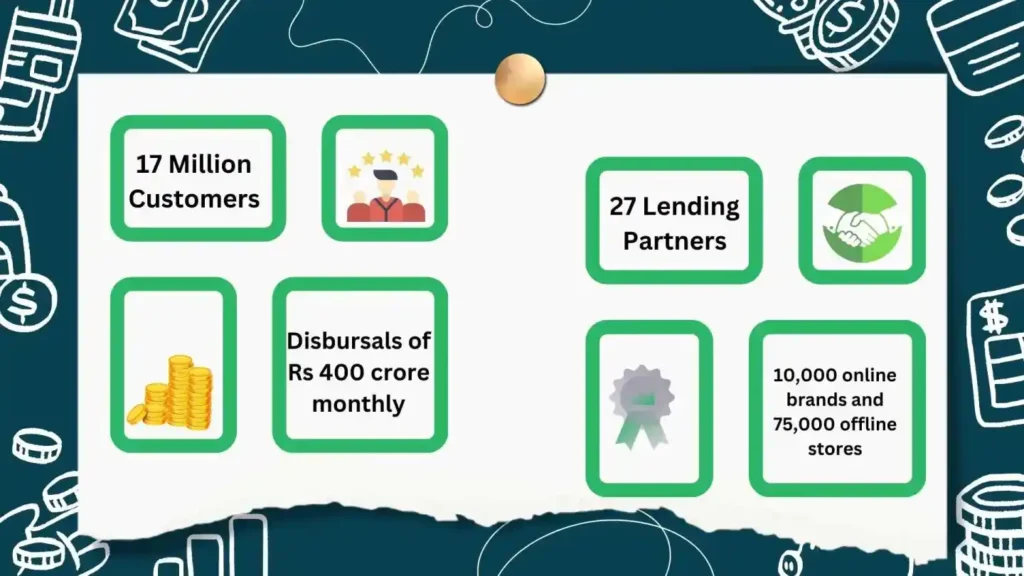
The company’s success is closely tied to India’s booming Buy Now, Pay Later (BNPL) market in India, especially during the pandemic. As people faced economic challenges, making purchases and paying later in interest-free installments gained popularity. ZestMoney capitalized on this trend, raising funds at a valuation of $450 million.
This strategic move attracted foreign investors eyeing fintech firms with BNPL products, propelling ZestMoney to become one of the country’s fastest-growing consumer lending fintech companies.
And here’s the cherry on top – ZestMoney is not just a lender, it’s a digital maestro because every EMI payment made through the platform was reported to CIBIL, contributing to users’ credit histories.
The startup had a stroke of luck, or you could say,
“BHAGWAN JAB DETA HAI TO CHAPPAR PHAD KE DETA HAI,”.
They quickly gained attention and managed to secure around $140 million in funding from investors like PayU, Zip, Ribbit Capital, Quona Capital, Xiaomi, Omidyar Network, and Goldman Sachs.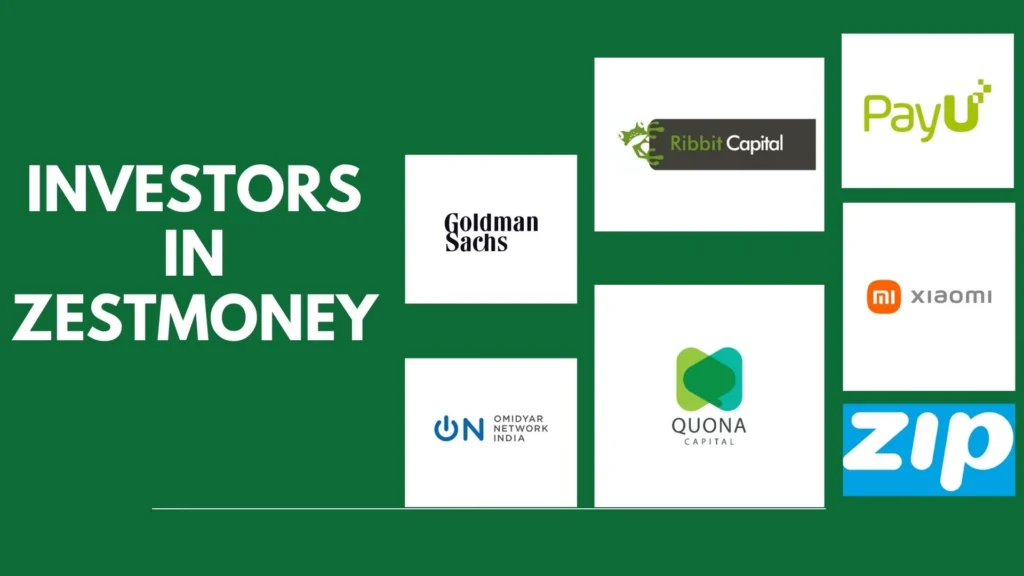
But the coin folded, and suddenly, reports surfaced, indicating a high bad debt rate of over 13%, compared to the industry’s usual 2-3% for Buy Now, Pay Later (BNPL) loans. Sources claimed that ZestMoney didn’t do a great job of figuring out if borrowers could pay back their loans, which led to more people being unable to repay.
Mandar Satpute, ZestMoney’s Chief Business Officer, disputed these reports, asserting that the company’s Non-Performing Assets (NPAs) consistently stayed below 2.5%. Despite this, the company found itself in a tight spot, requiring capital infusion to stay afloat.
In a glimmer of hope for ZestMoney, talks emerged in November 2022 about PhonePe potentially acquiring the lending platform for an estimated $200-$300 million. This move would have marked PhonePe’s entry into digital lending through the Unified Payments Interface (UPI).
However, the deal fell through in March, with PhonePe citing due diligence issues as the reason. There were claims that ZestMoney had inflated its FY23 revenue figures and manipulated customer acquisition costs, among other discrepancies in loan disbursal numbers, according to sources close to the situation.
On the brink of bankruptcy when we first stepped in, ZestMoney, a fintech company backed by Walmart, walked away from a deal with PhonePe in March, citing issues uncovered during due diligence, including inflated revenue numbers and manipulated customer acquisition costs.
The fallout led to ZestMoney implementing a business continuity plan, resulting in the layoff of around 20% of its workforce (approximately 100 employees), some of whom were absorbed by PhonePe. PhonePe had provided ZestMoney a crucial $18 million loan the previous year, serving as a lifeline for the struggling company, as revealed by Sameer Nigam, CEO of PhonePe.
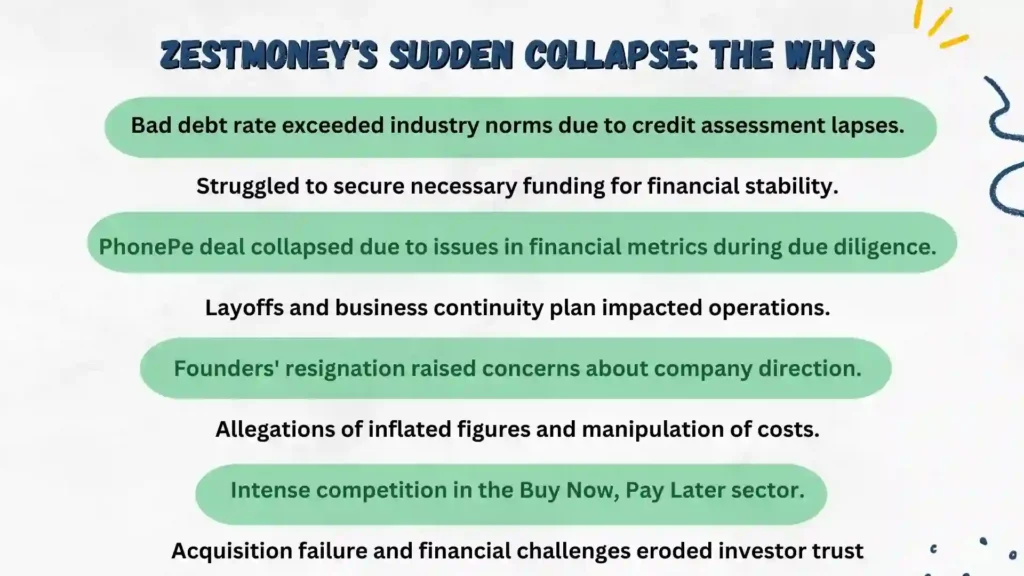
And then the toughest situation yet to come when its trio founders—Lizzie Chapman, Priya Sharma, and Ashish Anantharaman—decided to step down on May 15, just two months after PhonePe backed out of acquiring the BNPL platform. This raised concerns about ZestMoney’s survival due to financial challenges.
However, following the founders’ resignation, the company introduced ZestMoney 2.0, assuring employees of variable pay and salary hikes. The new leadership, including Abhishek Sharma, Mandar Satupte, and Mohit Chhajer, took charge. In August, existing investors like Quona Capital, Omidyar Network India, Flourish Ventures, Zip, and Scarlet Capital infused $5 million to keep the business afloat.
Unfortunately, on December 5th, ZestMoney informed employees that its turnaround plan, known as ZestMoney 2.0 or ZeMo 2.0, did not succeed.
“What are your thoughts on the rollercoaster journey of ZestMoney?”
The rise, fall, and unexpected challenges have created quite a buzz. Do you have any insights or perspectives to share about the company’s strategic decisions, the impact of the founders’ resignation, or the dynamics of the fintech industry? Feel free to share your thoughts.
Happy investing and thank you for reading!
Disclaimer:
This website content is only for educational purposes, not investment advice. Before making any investment, it’s important to do your own research and be fully informed. Investing in the stock market includes risks, and you should carefully read the Risk Disclosure documents before proceeding. Please remember that past performance doesn’t guarantee future results, and due to market fluctuations, your investment goals may not always be achieved.
Share via:

